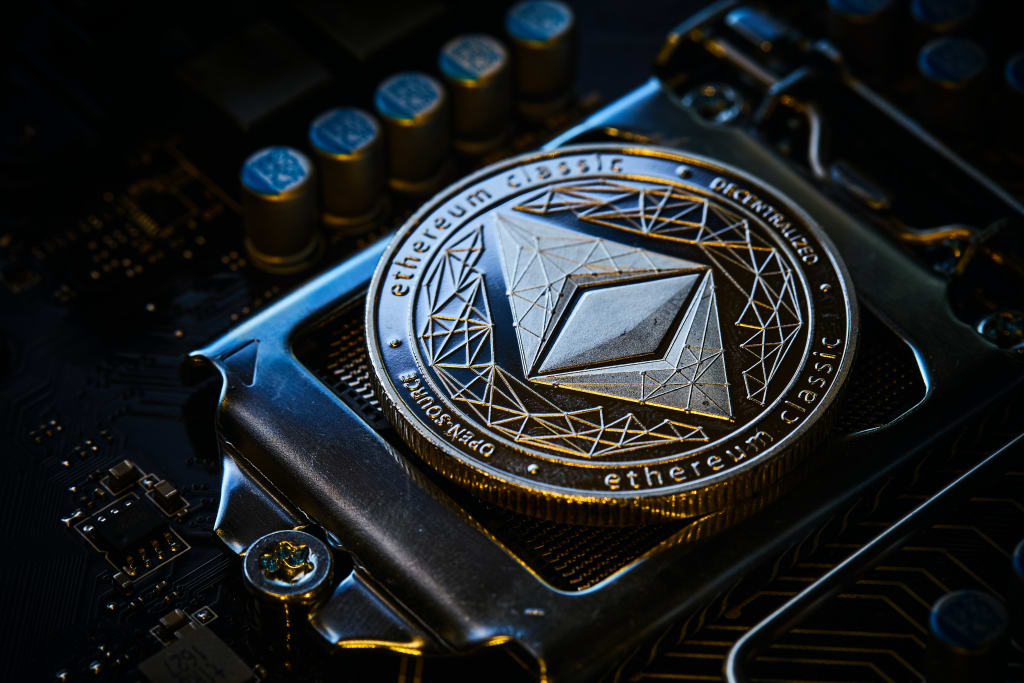Why Ethereum Merge Completion Matters
Ethereum formally adopted proof of stake a few weeks before. Its carbon footprint is expected to drop by more than 99%.

There are two largest blockchains in the world: Ethereum and Bitcoin. It makes the cryptocurrency ether, and most NFTs are built on its blockchain.
On Tuesday morning, the blockchain for Ethereum used about as much electricity as all of Chile. A few minutes before midnight PT, the blockchain needed over 99% less energy than it did before. After eight years of planning, Ethereum switched to a proof-of-work model. This means that the old way of making ether cryptocurrency tokens, which used a lot of electricity, is no longer used.
That action, referred to as "The Merge," has major ramifications.
Skeptics of cryptocurrencies usually say that coins like bitcoin and ether are worthless and use up a lot of electricity. The first point is controversial and personal, but the second is a fact. In a time when preventing climate change is seen by more people than ever as the most important thing for society to do, bitcoin and Ethereum's carbon emissions are too obvious to ignore.
Proof of stake has been planned for Ethereum since 2014 before the blockchain was even officially used. Due to how technically challenging it is and how much money is at stake, it has been postponed several times. The Merge is part of a set of changes that used to be called "ether 2.0." These changes change the way the blockchain works.
Why does crypto harm the environment?
Before understanding the Merge, you need to know what cryptocurrency miners do.
Let's say you wanted to mine crypto. You would set up a powerful computer, a "mining rig," to run software that tries to solve complicated cryptographic puzzles. Your rig is trying to solve the same puzzle as hundreds of thousands of other miners worldwide.
If your computer figures out the code first, you get to "validate" a block, which means you can add new information to the blockchain. If you do this, you'll get a reward: Bitcoin miners get 6.25 bitcoins ($129,000) for every block they verify, while Ethereum miners get 2 ether ($2,400) plus gas, which are the fees that users pay for each transaction.
Your computer must be powerful enough to contribute to this race. Hence individuals generally build up warehouses full of rigs. This system is called "proof of work" because computers have to unscramble a puzzle, which takes a lot of energy, to prove that they used energy.
How much power does cryptography take?
Quite a bit. It is thought that Bitcoin uses about 150 terawatt hours of electricity each year, which more than 45 million people in Argentina use. Ethereum uses about 62 million terawatt hours, about the same as Switzerland's 9 million people.
A lot of that energy comes from sources that keep on giving. The Bitcoin Mining Council says that about 57% of the energy used to mine bitcoin comes from clean sources. (BMC relies on its members to report things on their own.) This is not done out of concern for the environment but out of self-interest: Renewable energy is cheap, so mines are often set up near farms that use wind, sun, or water power.
Still, the amount of carbon is huge. It is thought that Ethereum puts out about as much carbon dioxide as Denmark or Chile.
What benefits will the Merge provide?
Proof of work, which Ethereum uses now and requires a lot of energy, will be replaced by proof of stake after the Merge.
In the world of cryptocurrency, "staking" means putting cryptocurrency on a protocol. This is sometimes done to get people interested. For example, the people who made the terraUSD stablecoin gave customers 19.5% interest on the TerraUSD they staked. If you put in $10,000, you could get $11,900 back after a year.
Sometimes, like with a proof-of-stake blockchain, a staked cryptocurrency helps secure a protocol. As we'll see in a moment, the more ether is staked, the safer the blockchain will be after the Merge.
With the adoption of proof of stake, miners won't need much energy to solve cryptographic problems and validate new blocks.
They will put ether tokens into a pool as an alternative. Imagine that each of these is a ticket for the lottery: If your token number is called, you get to check the next block and get the rewards that come with that.
It still costs a lot of money. Prospective block verifiers, who will be called "validators" instead of "miners," must stake at least 32 ether ($52,000) to be able to participate. In this system, block validation is done using natural capital instead of power. In a proof-of-work system, a bad actor needs 51% of the network's electricity to take over. In a proof-of-stake system, they would need 51% of all the ether staked. The cost of reaching 51% of a network's capital increases as more ether is staked. This makes the network safer.
The Ethereum Foundation estimates that the system's power consumption would decrease by 99.65% due to the removal of cryptographic difficulties.
What does "the Merge" mean?
By merging two blockchains, Ethereum changed from proof of work to proof of stake.
People use the "mainnet" blockchain, which is different from the different "testnet" blockchains that developers only use. The "beacon chain" is a brand-new network that Ethereum developers developed in December 2020. In many ways, the beacon chain is the new Ethereum.
Since its founding 19 months ago, the beacon chain, a proof-of-stake network, has operated independently. Validators have been adding blocks to the chain, but these blocks haven't had any data or transactions. It's like a bus going on empty routes to ensure the engine works well.
During the Merge, the data on Ethereum's main net was moved to the beacon chain, which is now the network's main blockchain. Using the bus as a metaphor again, it's like all the people who used to ride the old, less efficient buses are now being put on the buses with engines that use less energy.
Exist any risks?
Absolutely. People who don't like Ethereum, usually people who like bitcoin, say that the merge is like changing the plane's engine in the middle of a flight. Not just the plane is at risk, but also the $188 billion worth of ether that is in circulation.
On a technical level, the new blockchain could have many bugs that nobody knows about yet. Critics also wonder if proof of stake will be as safe as proof of work. Charbonneau thinks it could be safer because of a feature called "slashing." If validators are found to have done something bad, their staked ether can be burned, and their network access can be taken away. Unlike proof of labor, whereby if someone succeeds in holding 51% of the power, that power cannot be taken away from them, this system allows for the transfer of power.
About the Creator
Estalontech
Estalontech is an Indie publisher with over 400 Book titles on Amazon KDP. Being a Publisher , it is normal for us to co author and brainstorm on interesting contents for this publication which we will like to share on this platform






Comments
There are no comments for this story
Be the first to respond and start the conversation.